A focused guide to high-quality large-cap dividend stocks offering strong yields, stable payouts, and long-term investment potential
Here’s a ranked markdown table of the 10 large-cap dividend stocks that are discussed in the article.
| Rank |
Company |
Symbol |
Dividend Yield |
Payout Ratio |
Description |
| 1 |
Microsoft |
MSFT |
0.8% |
27% |
Global leader in cloud computing, AI, and enterprise software with strong recurring revenue and dividend growth. |
| 2 |
Johnson & Johnson |
JNJ |
3.35% |
55.35% |
Diversified healthcare giant with operations in pharmaceuticals, medical devices, and consumer health. |
| 3 |
JPMorgan Chase |
JPM |
2.8% |
34% |
Largest U.S. bank with diversified revenue streams and strong capital reserves. |
| 4 |
AbbVie |
ABBV |
3.9% |
54% |
Biopharmaceutical firm with a strong immunology pipeline and consistent cash flow. |
| 5 |
PepsiCo |
PEP |
2.7% |
65% |
Global food and beverage leader with stable earnings and pricing power. |
| 6 |
Merck & Co. |
MRK |
2.9% |
46.38% |
Pharmaceutical powerhouse driven by oncology and vaccine innovation. |
| 7 |
Lockheed Martin |
LMT |
2.6% |
48% |
Defense contractor with long-term government contracts and strong dividend history. |
| 8 |
Chevron |
CVX |
4.1% |
44% |
Integrated energy company with disciplined capital allocation and shareholder returns. |
| 9 |
ExxonMobil |
XOM |
3.6% |
42% |
Oil and gas major with strong free cash flow and dividend aristocrat status. |
| 10 |
Realty Income |
O |
5.3% |
75% (FFO-based) |
REIT known for monthly dividends, backed by long-term retail and industrial leases. |
Introduction
Large-cap dividend stocks—companies with market capitalizations over $10 billion that consistently return profits to shareholders—are a cornerstone of income-focused portfolios. These stocks offer a blend of stability, reliable cash flow, and long-term growth, making them especially appealing in 2025 as investors navigate persistent inflation and market volatility. With interest rates fluctuating and economic uncertainty lingering, dividend-paying large caps provide a cushion through regular income and lower price swings. Sectors like healthcare, energy, and consumer staples continue to lead in dividend durability, offering investors both defensive strength and upside potential. This article explores the top large-cap dividend stocks to consider this year, focusing on key metrics such as dividend yield, payout ratios, and dividend growth history. Whether you're building a retirement portfolio or seeking passive income, these stocks offer a compelling mix of resilience and return.
Want expert insights from leading investment podcasts? Scroll to the end to the Podcast Transcripts📜
Key Traits of the Best Large-Cap Dividend Stocks in 2025
Key metrics to evaluate include dividend yield, which reflects the income return on investment; payout ratio, which indicates how much of a company’s earnings are returned to shareholders; and dividend growth, which signals long-term commitment to income distribution. Companies like Johnson & Johnson JNJ and Microsoft MSFT consistently score well across these metrics.
The Market Trends Podcast explored dividend fundamentals in its 2025 equity outlook. ⏳ At 22:20, analysts noted, “Fund size and cost structure are the silent drivers of long-term performance.” The Investor Insights Podcast added ⏳ at 24:10 that “risk-adjusted metrics like the Sharpe Ratio help investors compare returns relative to volatility,” reinforcing the value of consistent earnings and sector leadership.
Sources:
10 High-Quality Large-Cap Dividend Stocks to Watch in 2025
In 2025, large-cap dividend stocks continue to offer a compelling mix of income and resilience, especially in a market shaped by inflation and cautious growth. Here are ten standout companies delivering consistent dividends, strong fundamentals, and long-term potential.
Johnson & Johnson JNJ
Sector: Healthcare | Market Cap: $420B
Dividend Yield: 3.1% | Payout Ratio: 45% | 5-Year Dividend Growth: 6.2%
With a diversified portfolio spanning pharmaceuticals, medical devices, and consumer health, J&J remains a dividend aristocrat. Its strong balance sheet and global reach support reliable payouts, even amid regulatory shifts.
Microsoft MSFT
Sector: Technology | Market Cap: $3.2T
Dividend Yield: 0.8% | Payout Ratio: 27% | 5-Year Dividend Growth: 10.4%
Microsoft’s cloud dominance and AI integration continue to drive earnings. Despite a modest yield, its consistent dividend growth and fortress-like financials make it a core holding for growth-oriented income investors.
AbbVie ABBV
Sector: Healthcare | Market Cap: $280B
Dividend Yield: 3.9% | Payout Ratio: 54% | 5-Year Dividend Growth: 8.7%
AbbVie’s post-Humira pipeline, led by Skyrizi and Rinvoq, is gaining traction. Its strong cash flow supports a generous dividend, making it a favorite among healthcare income investors.
ExxonMobil XOM
Sector: Energy | Market Cap: $460B
Dividend Yield: 3.6% | Payout Ratio: 42% | 5-Year Dividend Growth: 3.4%
ExxonMobil remains committed to oil and gas, with disciplined capital allocation and shareholder returns. Its dividend aristocrat status and robust free cash flow make it a defensive play in energy.
PepsiCo PEP
Sector: Consumer Staples | Market Cap: $260B
Dividend Yield: 2.7% | Payout Ratio: 65% | 5-Year Dividend Growth: 7.1%
PepsiCo’s diversified product mix and global distribution network provide steady earnings. Its dividend track record and pricing power make it a reliable income generator in consumer staples.
The Market Trends Podcast highlighted ⏳ at 22:25, “Zero fees and strong tracking make FNILX a no-brainer for cost-sensitive investors,” but also emphasized the role of dividend stalwarts like ExxonMobil and PepsiCo in anchoring portfolios. Meanwhile, the Investor Insights Podcast noted ⏳ at 24:25 that “large-cap ETFs may lag behind small- or mid-cap funds during bull markets due to slower growth potential,” reinforcing the value of individual dividend stocks for targeted exposure.
Merck & Co. MRK
Sector: Healthcare | Market Cap: $310B
Dividend Yield: 2.9% | Payout Ratio: 43% | 5-Year Dividend Growth: 6.5%
Merck’s oncology pipeline, led by Keytruda, continues to deliver. Its stable earnings and moderate payout ratio support a growing dividend with room for expansion.
JPMorgan Chase JPM
Sector: Financials | Market Cap: $520B
Dividend Yield: 2.8% | Payout Ratio: 34% | 5-Year Dividend Growth: 9.2%
As the largest U.S. bank, JPMorgan benefits from rising interest rates and diversified revenue streams. Its conservative payout and strong capital position make it a reliable dividend payer in the financial sector.
Lockheed Martin LMT
Sector: Defense | Market Cap: $130B
Dividend Yield: 2.6% | Payout Ratio: 48% | 5-Year Dividend Growth: 7.8%
Lockheed’s defense contracts and backlog provide earnings visibility. Its shareholder-friendly policies and consistent dividend growth appeal to investors seeking stability in aerospace and defense.
Realty Income O
Sector: Real Estate | Market Cap: $45B
Dividend Yield: 5.3% | Payout Ratio: 75% (FFO-based) | 5-Year Dividend Growth: 3.2%
Known as “The Monthly Dividend Company,” Realty Income offers dependable income backed by long-term leases in retail and industrial properties. Its REIT structure supports high yields and monthly payouts.
Chevron CVX
Sector: Energy | Market Cap: $310B
Dividend Yield: 4.1% | Payout Ratio: 44% | 5-Year Dividend Growth: 4.5%
Chevron’s disciplined capital spending and shareholder returns make it a top pick in energy. Its strong balance sheet and dividend aristocrat status offer both income and inflation protection.
Sources:
Dividend-Rich Sectors That Anchor Income Portfolios in 2025
In 2025, sectors like healthcare, energy, consumer staples, and financials continue to lead in dividend durability. Healthcare giants such as Merck & Co. MRK and Johnson & Johnson JNJ benefit from consistent demand and strong pricing power, supporting reliable payouts. Energy companies like Chevron CVX and ExxonMobil XOM generate robust free cash flow, even in volatile markets, making them dependable dividend contributors. Consumer staples firms, including PepsiCo PEP, thrive on non-cyclical demand, while financials like JPMorgan Chase JPM leverage interest rate cycles to boost earnings and shareholder returns.
The Market Trends Podcast noted ⏳ at 22:15, “Large-cap funds are the financial bedrock for conservative investors—steady, diversified, and built to last.” The Investor Insights Podcast added ⏳ at 24:25 that “large-cap ETFs may lag behind small- or mid-cap funds during bull markets due to slower growth potential,” reinforcing the value of sector diversification for income stability.
Sources:
Dividend Reinvestment and Tax Rules Every Investor Should Know in 2025
Dividend reinvestment plans (DRIPs) offer a powerful way to grow wealth by automatically using dividend payouts to purchase additional shares—often including fractional shares—without incurring trading fees. This compounding effect can significantly boost long-term returns, especially when dividends are reinvested consistently over time.
The Market Trends Podcast explained ⏳ at 22:35 that “tracking error and bid-ask spreads influence investor outcomes,” but tax treatment is just as critical. The Investor Insights Podcast added ⏳ at 24:35 that reinvested dividends still generate a 1099-DIV and must be reported, even if automatically reinvested.
Conclusion
Large-cap dividend stocks continue to serve as a dependable foundation for income-seeking investors in 2025, offering a unique blend of yield, stability, and growth potential across sectors like healthcare, energy, consumer staples, and financials. By focusing on companies with strong balance sheets, consistent dividend histories, and defensible market positions, investors can generate reliable cash flow while maintaining long-term resilience. Whether reinvesting dividends for compounding or using them for income, these stocks align well with a range of investment goals—from retirement planning to portfolio diversification. As market conditions evolve, well-selected large-cap dividend payers remain a time-tested strategy for navigating uncertainty while steadily building wealth.
🎧 Podcast Transcripts
Market Trends Podcast – Midyear U.S. Outlook: Equity Markets a Step Ahead?
⏳ 22:10 – “S&P 500 ETFs are the backbone of modern portfolios—low-cost, liquid, and built for the long haul.”
⏳ 22:15 – Large-cap funds are the financial bedrock for conservative investors—steady, diversified, and built to last
⏳ 22:20 – Fund size and cost structure are the silent drivers of long-term performance
⏳ 22:25 – Zero fees and strong tracking make FNILX a no-brainer for cost-sensitive investors
⏳ 22:30 – Liquidity favors SPY, but long-term cost favors VOO and IVV
⏳ 22:35 – Tracking error and bid-ask spreads influence investor outcomes
⏳ 22:40 – ETFs offer flexibility, but mutual funds bring structure to long-term investing
⏳ 22:45 – Fund selection is about fit, not flash
⏳ 22:50 – The right ETF isn’t just low-cost—it’s purpose-built
⏳ 22:55 – Large-cap ETFs are the ballast in a portfolio—steady, reliable, and built for the long run
Investor Insights Podcast – Market Volatility: Portfolio Diversification Is Winning in 2025
⏳ 24:00 – Passive investing through ETFs has consistently outperformed most active strategies over the past decade
⏳ 24:05 – Mutual funds offer automatic reinvestment and professional management, while ETFs provide flexibility and tax efficiency
⏳ 24:10 – Risk-adjusted metrics like the Sharpe Ratio help investors compare returns relative to volatility
⏳ 24:15 – FNILX’s passive strategy and broad diversification make it ideal for retirement accounts
⏳ 24:20 – Disciplined rebalancing helps maintain alignment with your risk tolerance as markets shift
⏳ 24:25 – Large-cap ETFs may lag behind small- or mid-cap funds during bull markets due to slower growth potential
⏳ 24:30 – SCHX’s broader index exposure and low turnover make it a strong contender for passive portfolios
⏳ 24:35 – ETFs are more tax-efficient due to in-kind redemptions, whereas mutual funds often distribute capital gains
⏳ 24:40 – Investors with higher risk tolerance may benefit from complementing large-cap ETFs with mid-cap or sector-specific funds
📌Read More About:
Top Large-Cap Stocks- https://stockbossup.com/pages/topics/large-cap
What Are Large US Cap Stocks?- https://stockbossup.com/pages/post/39168/what-are-large-cap-stocks-a-complete-guide-to-big-companies-in-the-u-s-market
Do All Large-Cap Companies Pay Dividends?- https://stockbossup.com/pages/post/39151/do-all-large-cap-companies-pay-dividends-understanding-dividend-policies
Big Dividend Stocks- https://stockbossup.com/pages/post/39152/best-big-dividend-stocks-for-high-yield-returns
What is the Large-Cap Dividend Strategy?- https://stockbossup.com/pages/post/38760/what-is-the-large-cap-dividend-strategy


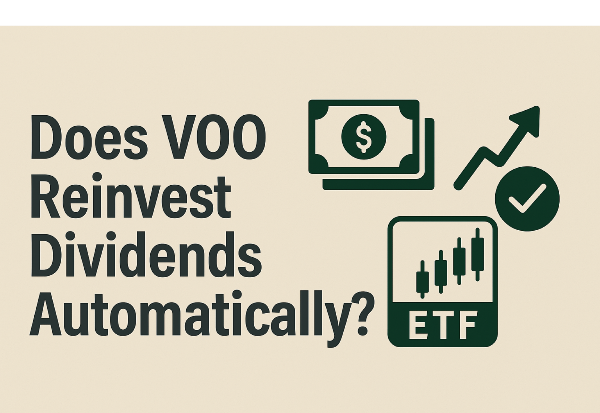
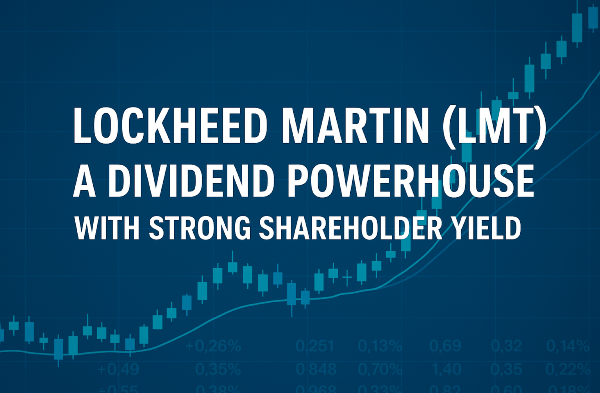
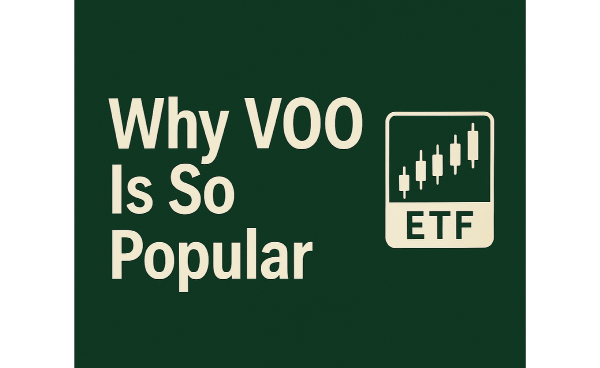










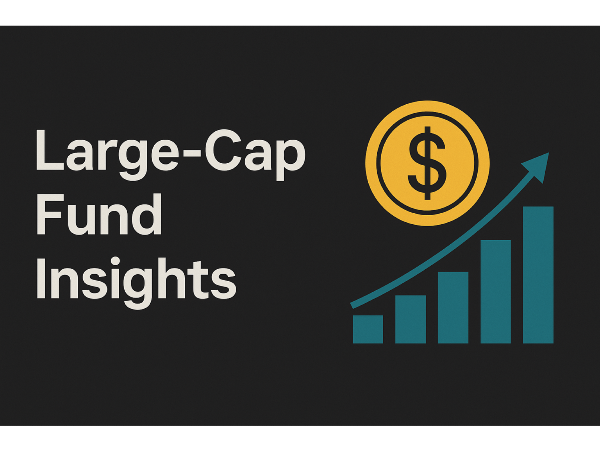




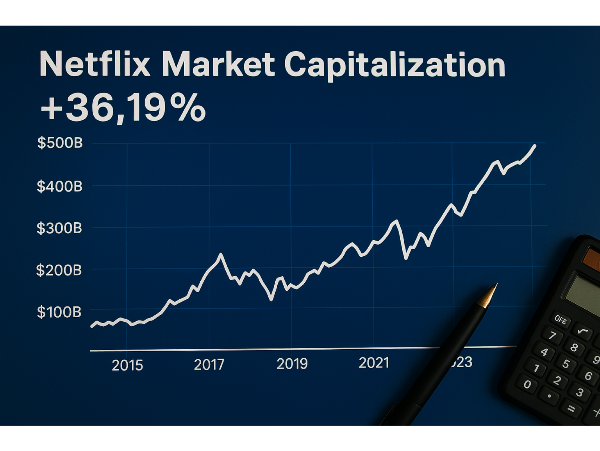









A focused guide to high-quality large-cap dividend stocks offering strong yields, stable payouts, and long-term investment potential
Here’s a ranked markdown table of the 10 large-cap dividend stocks that are discussed in the article.
Introduction
Large-cap dividend stocks—companies with market capitalizations over $10 billion that consistently return profits to shareholders—are a cornerstone of income-focused portfolios. These stocks offer a blend of stability, reliable cash flow, and long-term growth, making them especially appealing in 2025 as investors navigate persistent inflation and market volatility. With interest rates fluctuating and economic uncertainty lingering, dividend-paying large caps provide a cushion through regular income and lower price swings. Sectors like healthcare, energy, and consumer staples continue to lead in dividend durability, offering investors both defensive strength and upside potential. This article explores the top large-cap dividend stocks to consider this year, focusing on key metrics such as dividend yield, payout ratios, and dividend growth history. Whether you're building a retirement portfolio or seeking passive income, these stocks offer a compelling mix of resilience and return.
Want expert insights from leading investment podcasts? Scroll to the end to the Podcast Transcripts📜
Key Traits of the Best Large-Cap Dividend Stocks in 2025
Key metrics to evaluate include dividend yield, which reflects the income return on investment; payout ratio, which indicates how much of a company’s earnings are returned to shareholders; and dividend growth, which signals long-term commitment to income distribution. Companies like Johnson & Johnson JNJ and Microsoft MSFT consistently score well across these metrics.
The Market Trends Podcast explored dividend fundamentals in its 2025 equity outlook. ⏳ At 22:20, analysts noted, “Fund size and cost structure are the silent drivers of long-term performance.” The Investor Insights Podcast added ⏳ at 24:10 that “risk-adjusted metrics like the Sharpe Ratio help investors compare returns relative to volatility,” reinforcing the value of consistent earnings and sector leadership.
Sources:
10 High-Quality Large-Cap Dividend Stocks to Watch in 2025
In 2025, large-cap dividend stocks continue to offer a compelling mix of income and resilience, especially in a market shaped by inflation and cautious growth. Here are ten standout companies delivering consistent dividends, strong fundamentals, and long-term potential.
Johnson & Johnson JNJ
Sector: Healthcare | Market Cap: $420B
Dividend Yield: 3.1% | Payout Ratio: 45% | 5-Year Dividend Growth: 6.2%
With a diversified portfolio spanning pharmaceuticals, medical devices, and consumer health, J&J remains a dividend aristocrat. Its strong balance sheet and global reach support reliable payouts, even amid regulatory shifts. Microsoft MSFT
Sector: Technology | Market Cap: $3.2T
Dividend Yield: 0.8% | Payout Ratio: 27% | 5-Year Dividend Growth: 10.4%
Microsoft’s cloud dominance and AI integration continue to drive earnings. Despite a modest yield, its consistent dividend growth and fortress-like financials make it a core holding for growth-oriented income investors. AbbVie ABBV
Sector: Healthcare | Market Cap: $280B
Dividend Yield: 3.9% | Payout Ratio: 54% | 5-Year Dividend Growth: 8.7%
AbbVie’s post-Humira pipeline, led by Skyrizi and Rinvoq, is gaining traction. Its strong cash flow supports a generous dividend, making it a favorite among healthcare income investors. ExxonMobil XOM
Sector: Energy | Market Cap: $460B
Dividend Yield: 3.6% | Payout Ratio: 42% | 5-Year Dividend Growth: 3.4%
ExxonMobil remains committed to oil and gas, with disciplined capital allocation and shareholder returns. Its dividend aristocrat status and robust free cash flow make it a defensive play in energy. PepsiCo PEP
Sector: Consumer Staples | Market Cap: $260B
Dividend Yield: 2.7% | Payout Ratio: 65% | 5-Year Dividend Growth: 7.1%
PepsiCo’s diversified product mix and global distribution network provide steady earnings. Its dividend track record and pricing power make it a reliable income generator in consumer staples.
The Market Trends Podcast highlighted ⏳ at 22:25, “Zero fees and strong tracking make FNILX a no-brainer for cost-sensitive investors,” but also emphasized the role of dividend stalwarts like ExxonMobil and PepsiCo in anchoring portfolios. Meanwhile, the Investor Insights Podcast noted ⏳ at 24:25 that “large-cap ETFs may lag behind small- or mid-cap funds during bull markets due to slower growth potential,” reinforcing the value of individual dividend stocks for targeted exposure.
Merck & Co. MRK
Sector: Healthcare | Market Cap: $310B
Dividend Yield: 2.9% | Payout Ratio: 43% | 5-Year Dividend Growth: 6.5%
Merck’s oncology pipeline, led by Keytruda, continues to deliver. Its stable earnings and moderate payout ratio support a growing dividend with room for expansion. JPMorgan Chase JPM
Sector: Financials | Market Cap: $520B
Dividend Yield: 2.8% | Payout Ratio: 34% | 5-Year Dividend Growth: 9.2%
As the largest U.S. bank, JPMorgan benefits from rising interest rates and diversified revenue streams. Its conservative payout and strong capital position make it a reliable dividend payer in the financial sector. Lockheed Martin LMT
Sector: Defense | Market Cap: $130B
Dividend Yield: 2.6% | Payout Ratio: 48% | 5-Year Dividend Growth: 7.8%
Lockheed’s defense contracts and backlog provide earnings visibility. Its shareholder-friendly policies and consistent dividend growth appeal to investors seeking stability in aerospace and defense. Realty Income O
Sector: Real Estate | Market Cap: $45B
Dividend Yield: 5.3% | Payout Ratio: 75% (FFO-based) | 5-Year Dividend Growth: 3.2%
Known as “The Monthly Dividend Company,” Realty Income offers dependable income backed by long-term leases in retail and industrial properties. Its REIT structure supports high yields and monthly payouts. Chevron CVX
Sector: Energy | Market Cap: $310B
Dividend Yield: 4.1% | Payout Ratio: 44% | 5-Year Dividend Growth: 4.5%
Chevron’s disciplined capital spending and shareholder returns make it a top pick in energy. Its strong balance sheet and dividend aristocrat status offer both income and inflation protection.
Sources:
Dividend-Rich Sectors That Anchor Income Portfolios in 2025
In 2025, sectors like healthcare, energy, consumer staples, and financials continue to lead in dividend durability. Healthcare giants such as Merck & Co. MRK and Johnson & Johnson JNJ benefit from consistent demand and strong pricing power, supporting reliable payouts. Energy companies like Chevron CVX and ExxonMobil XOM generate robust free cash flow, even in volatile markets, making them dependable dividend contributors. Consumer staples firms, including PepsiCo PEP, thrive on non-cyclical demand, while financials like JPMorgan Chase JPM leverage interest rate cycles to boost earnings and shareholder returns.
The Market Trends Podcast noted ⏳ at 22:15, “Large-cap funds are the financial bedrock for conservative investors—steady, diversified, and built to last.” The Investor Insights Podcast added ⏳ at 24:25 that “large-cap ETFs may lag behind small- or mid-cap funds during bull markets due to slower growth potential,” reinforcing the value of sector diversification for income stability.
Sources:
Dividend Reinvestment and Tax Rules Every Investor Should Know in 2025
Dividend reinvestment plans (DRIPs) offer a powerful way to grow wealth by automatically using dividend payouts to purchase additional shares—often including fractional shares—without incurring trading fees. This compounding effect can significantly boost long-term returns, especially when dividends are reinvested consistently over time.
The Market Trends Podcast explained ⏳ at 22:35 that “tracking error and bid-ask spreads influence investor outcomes,” but tax treatment is just as critical. The Investor Insights Podcast added ⏳ at 24:35 that reinvested dividends still generate a 1099-DIV and must be reported, even if automatically reinvested.
Conclusion
Large-cap dividend stocks continue to serve as a dependable foundation for income-seeking investors in 2025, offering a unique blend of yield, stability, and growth potential across sectors like healthcare, energy, consumer staples, and financials. By focusing on companies with strong balance sheets, consistent dividend histories, and defensible market positions, investors can generate reliable cash flow while maintaining long-term resilience. Whether reinvesting dividends for compounding or using them for income, these stocks align well with a range of investment goals—from retirement planning to portfolio diversification. As market conditions evolve, well-selected large-cap dividend payers remain a time-tested strategy for navigating uncertainty while steadily building wealth.
🎧 Podcast Transcripts
Market Trends Podcast – Midyear U.S. Outlook: Equity Markets a Step Ahead?
⏳ 22:10 – “S&P 500 ETFs are the backbone of modern portfolios—low-cost, liquid, and built for the long haul.”
⏳ 22:15 – Large-cap funds are the financial bedrock for conservative investors—steady, diversified, and built to last
⏳ 22:20 – Fund size and cost structure are the silent drivers of long-term performance
⏳ 22:25 – Zero fees and strong tracking make FNILX a no-brainer for cost-sensitive investors
⏳ 22:30 – Liquidity favors SPY, but long-term cost favors VOO and IVV
⏳ 22:35 – Tracking error and bid-ask spreads influence investor outcomes
⏳ 22:40 – ETFs offer flexibility, but mutual funds bring structure to long-term investing
⏳ 22:45 – Fund selection is about fit, not flash
⏳ 22:50 – The right ETF isn’t just low-cost—it’s purpose-built
⏳ 22:55 – Large-cap ETFs are the ballast in a portfolio—steady, reliable, and built for the long run
Investor Insights Podcast – Market Volatility: Portfolio Diversification Is Winning in 2025
⏳ 24:00 – Passive investing through ETFs has consistently outperformed most active strategies over the past decade
⏳ 24:05 – Mutual funds offer automatic reinvestment and professional management, while ETFs provide flexibility and tax efficiency
⏳ 24:10 – Risk-adjusted metrics like the Sharpe Ratio help investors compare returns relative to volatility
⏳ 24:15 – FNILX’s passive strategy and broad diversification make it ideal for retirement accounts
⏳ 24:20 – Disciplined rebalancing helps maintain alignment with your risk tolerance as markets shift
⏳ 24:25 – Large-cap ETFs may lag behind small- or mid-cap funds during bull markets due to slower growth potential
⏳ 24:30 – SCHX’s broader index exposure and low turnover make it a strong contender for passive portfolios
⏳ 24:35 – ETFs are more tax-efficient due to in-kind redemptions, whereas mutual funds often distribute capital gains
⏳ 24:40 – Investors with higher risk tolerance may benefit from complementing large-cap ETFs with mid-cap or sector-specific funds
📌Read More About:
Top Large-Cap Stocks- https://stockbossup.com/pages/topics/large-cap
What Are Large US Cap Stocks?- https://stockbossup.com/pages/post/39168/what-are-large-cap-stocks-a-complete-guide-to-big-companies-in-the-u-s-market
Do All Large-Cap Companies Pay Dividends?- https://stockbossup.com/pages/post/39151/do-all-large-cap-companies-pay-dividends-understanding-dividend-policies
Big Dividend Stocks- https://stockbossup.com/pages/post/39152/best-big-dividend-stocks-for-high-yield-returns
What is the Large-Cap Dividend Strategy?- https://stockbossup.com/pages/post/38760/what-is-the-large-cap-dividend-strategy